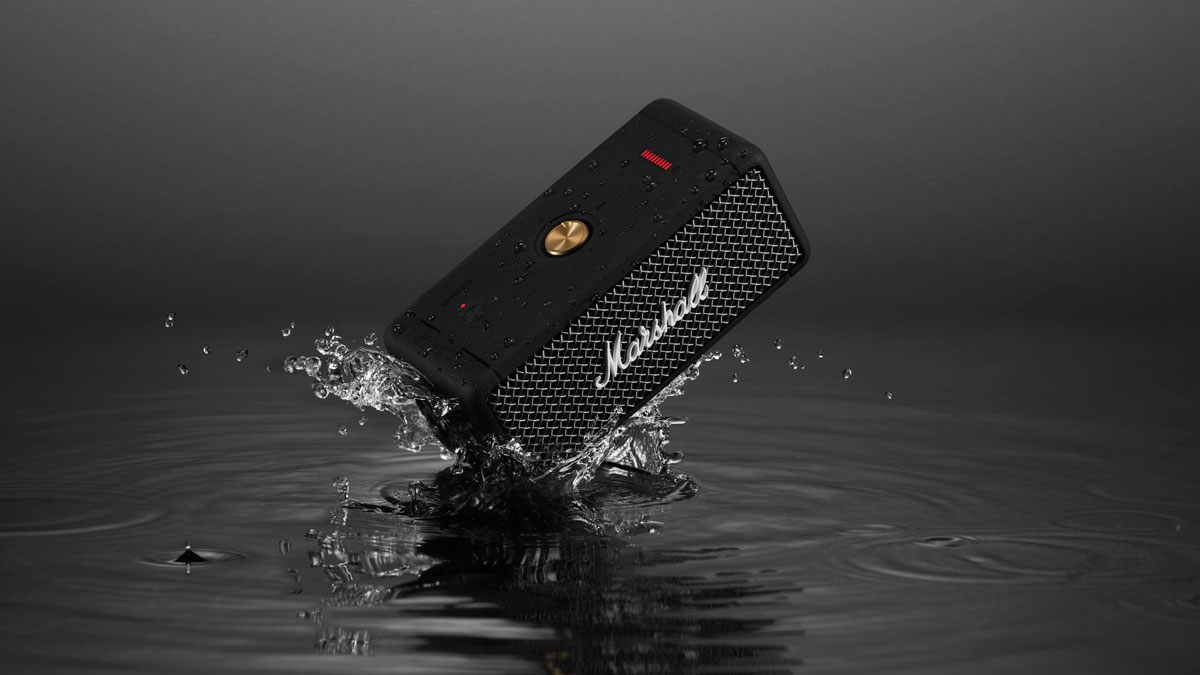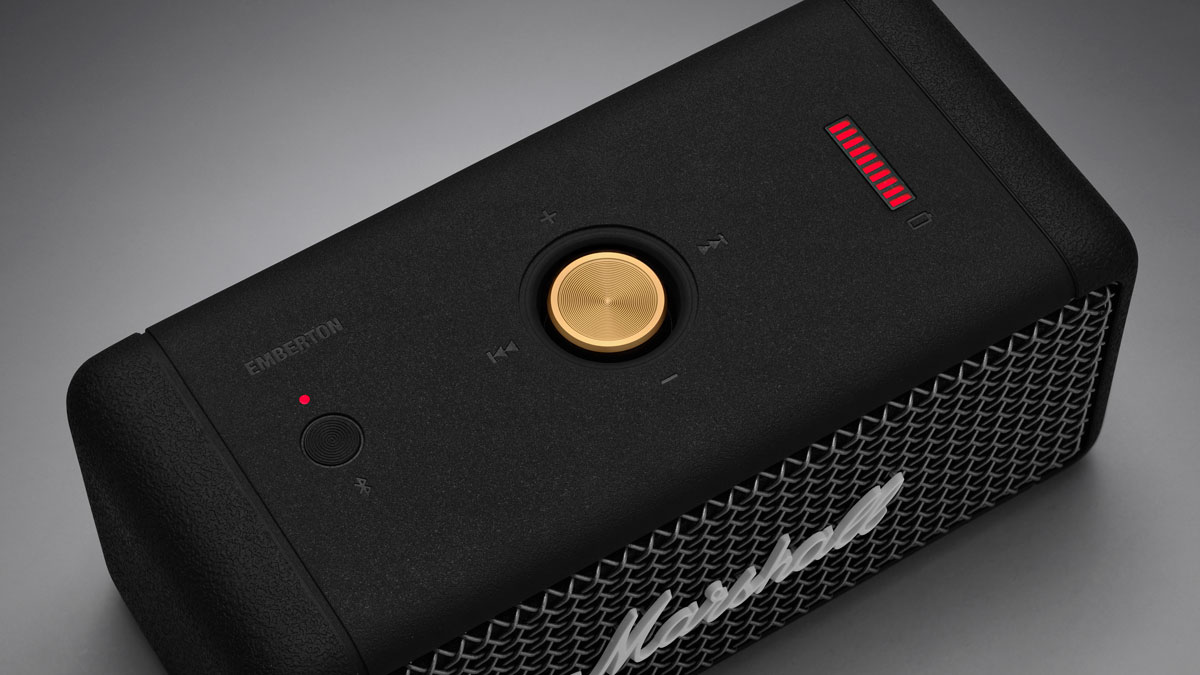Marshall’s super-compact Emberton is the company’s smallest-ever portable speaker
Multi-directional sound and 20 hours of playtime in the palm of your hand

Marshall has unveiled the Emberton, the guitar amp company’s smallest ever portable speaker.
The compact unit boasts True Stereophonic, offering multi-directional sound “where every spot is a sweet spot.”
There’s also 20+ hours of portable playtime, and the Emberton can be quick-charged via an included USB-C cable, with 20 minutes of charging allowing for five hours of play.

Controls include a multi-directional knob that allows for play, pause, skipping tracks and adjusting speaker volume, as well as functions as an on/off.
Other features include Bluetooth technology 5.0 and an IPX7 water-resistance rating.
The Emberton comes housed in a silicone exterior and solid metal grille with Marshall script and weighs 0.7 kg .
For more information, head to Marshall Headphones.
All the latest guitar news, interviews, lessons, reviews, deals and more, direct to your inbox!
Rich is the co-author of the best-selling Nöthin' But a Good Time: The Uncensored History of the '80s Hard Rock Explosion. He is also a recording and performing musician, and a former editor of Guitar World magazine and executive editor of Guitar Aficionado magazine. He has authored several additional books, among them Kurt Cobain: Montage of Heck, the companion to the documentary of the same name.

